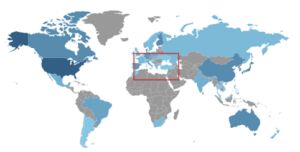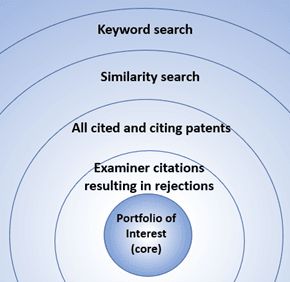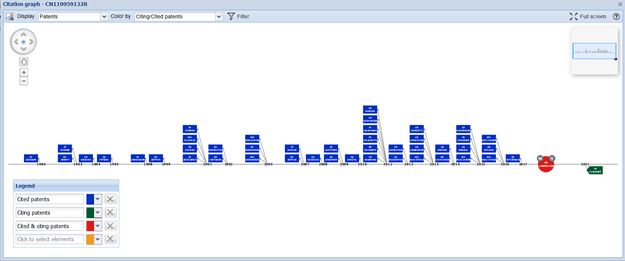There are many reasons why organizations may conduct patent searching exercises and—spoiler alert—they are not limited to simply finding prior art. In this article, we examine the strategic benefits of patent data analytics, as part of patent search projects.
By identifying whether prior art precedes an invention, patent searching is vital for determining if an innovation can be filed as a patent application, and before any money is invested in the patent prosecution process. However, that is not the only benefit of such tools.
Patent search results also deliver the strategic insights organizations need to assess if it makes sense to spend money on research in a specific technology, understand who is entering or already in the space, and identify which countries are seeing the most growth in patent applications. Thanks to patent data analytics, you can determine new technologies and/or market entrants—and, more importantly, whether they pose a real threat.

(Source: WO/2019/014521)
Benefits of Patent Data Analytics
- The 'WHERE to Look' Paradigm
In one case study, a large U.S. consumer products company was undertaking routine patent data analysis and learned that one of its main competitors, also based in the U.S., was filing patent applications in a distant Mediterranean region. The first U.S. company didn't file patent applications in that region, meaning its competitor could make and use its inventions without recourse. Further analysis determined that the competitor had established a research and development (R&D) facility in that region. To prevent further use of its inventions, the first company immediately filed patent applications in the territory to protect its IP.
This example highlights that patent data can be used for more than prior art searching alone. The company faced no trouble getting the patent applications granted, it simply wasn't aware of where and how its competitors were using the technology and changed its filing strategy accordingly.

- The Conundrum of Understanding "WHO Our Competitors Are"
While most companies know inherently who their existing competitors are, the known competitor is very different from a new market entrant; especially if that company is competing for a technology rather than a brand space.
Patent data analytics is one of the best ways to learn that information, as it enables you to review technologies, often embedded in patents, that are relevant to yours. Rather than searching for patents in each technological space that is relevant to your company, such analysis enables you to harness the patent examiners' time and expertise to identify indirectly who is in your space.
To see what they see, search your patents' forward citations for where examiners issued rejections based on your technology. Pay close attention to applications denied a patent based on your underlying technology. Much like a pebble dropped into a pond, the ever-widening concentric circles become broader and broader encapsulating more and more space. Think of the examiner rejections as the concentric circle closest to your pebble (your portfolio) dropped into the patent pond...

- "WHAT About" the Data?
Since the World Intellectual Property Organization (WIPO) was established in 1978, the U.S. has been the largest international patent filer. But that all changed in 2019 when China became the top filer of patents worldwide. Using Questel's Orbit Intelligence patent data analytics tool, we can see that there were almost 12 million priority filings in China between the beginning of 2019 and mid-2022.
Advanced patent search tools, such as Orbit Intelligence, provide an efficient way to assess large volumes of data, especially when evaluating potential prior art. Indeed, given the sheer volume of data from China alone, finding relevant prior art is now impossible without such patent data analytics tools.
There is also a quality issue inherent in data that cannot be assessed by merely looking at the numbers. For example, China has a 'Made In China 2025' plan that pushes a quantity-first approach to patent filings which, by default, is not necessarily an innovation-first approach. The rewards for filing patent applications in China include government subsidies, job promotions, and enhanced reputations for individuals, companies, and universities. This complicates the patent searching process, as it makes for many more results. With so many potential prior art sources, it is challenging to find what is truly relevant.
Patent data analytics not only identifies potential prior art but also helps the searcher refine that data based on relevancy. Adding additional variables in the search, such as citations (i.e., identifying patents based on citations), indicates whether the underlying patents are being relied upon in the searched space.

In our data-driven world, patent data analytics offers a vital and strategic tool for organizations of all industries, sizes, and locations. It generates useful insights and outcomes that can guide your business decisions and inform your future. There is an old saying that "Without data, you're just another person with an opinion". When it comes to patent data, this is equally true.
The content of this article is intended to provide a general guide to the subject matter. Specialist advice should be sought about your specific circumstances.

